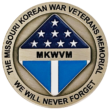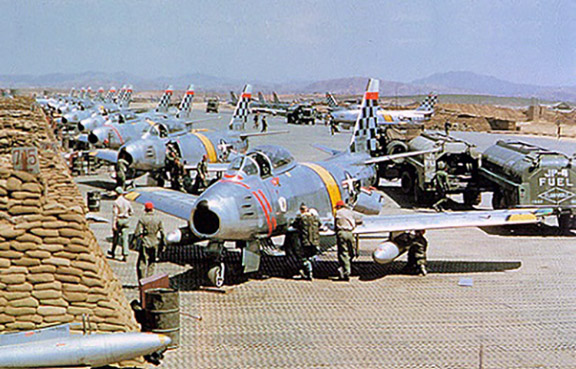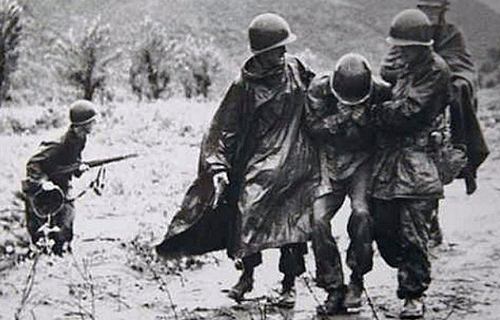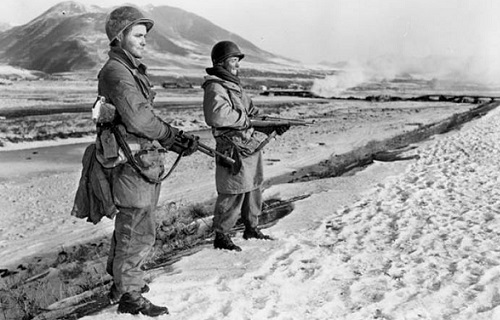The Korean War

In June of 1950, the United States rushed to the aid of the Republic of South Korea after they came under the attack of communist North Korea. Many thousands of American men and women were called to active duty to assist the effort — barely five years after the conclusion of World War II.
Although in the beginning it was called a “police action”, the war would eventually call over 1,500,000 Americans to serve during the course of the conflict. Before an armistice was signed in July 1953, the lives of nearly 37,000 American soldiers, 3,100 United Nations soldiers and 47,000 Republic of South Korea soldiers were lost.
An additional 103,000 Americans were wounded and many still receive medical care in VA Medical Centers across the country. Over 8,000 are still listed as missing in action. Of those who gave their lives to uphold our nation’s freedom and convictions, over 900 were from the state of Missouri, and over 100 were from the Kansas City area.
Armistice Day
The Korean War, which began on June 25, 1950, when the North Koreans invaded South Korea, officially ended on July 27, 1953. At 10 a.m., in Panmunjom, scarcely acknowledging each…
Korean War Accounting
Since 1982, the remains of over 450 Americans killed in the Korean War have been identified and returned to their families for burial with full military honors. This number is…
Korean War POW Camps
Throughout the war in Korea, U.S. and United Nations (UN) troops were taken as Prisoners of War (POW) by the North Korean People’s Army (NKPA) or Chinese Communist Forces (CCF)….
Operation Glory
Over the course of the Korean War, American casualties were buried in a variety of settings, including centralized United Nations (UN) cemeteries, local battlefield cemeteries, and prisoner of war (POW)…
Disinterring Korean War Unknowns
In 2019, the Defense POW/MIA Accounting Agency began disinterring 652 sets of unknown remains associated with the Korean War that had been buried at the National Memorial Cemetery of the…
The DMZ Campaigns
In June 1951, the Korean War shifted. The frantic war of movement that led the United Nations Command and North Korean and Chinese forces up and down the peninsula was…
Pusan Perimeter
After nearly a half decade of instability and violence on the peninsula, North Korea attacked South Korea on June 25, 1950. Three days later, the North Koreans captured South Korea’s…
The Inchon Campaign
The summer of 1950 went poorly for the United States and the rest of the United Nations Command. North Korea attacked South Korea, a vulnerable country the American military was…
Korean War Air Battles
While air power played a vital role in the Korean War, its function is often portrayed as less significant than that experienced in WWII. However, quick dismissal of the air…
Battle of Unsan
Unsan is located in the eastern section of North P’yŏngan province, roughly 60 km northeast of the North Korean capital of Pyongyang. Between October 25 and November 4, 1950, Unsan…
Battle of Chosin Reservoir
The Chosin Reservoir is a man-made lake located in the northeast of the Korean peninsula. From the end of November to mid-December 1950, it was the site of one of…











